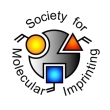Authors: Kong B, Selomulya C, Zheng GF, Zhao DY
Article Title: New faces of porous Prussian blue: interfacial assembly of integrated hetero-structures for sensing applications.
Publication date: 2015
Journal: Chemical Society Reviews
DOI: 10.1039/C5CS00397K
Abstract: Prussian blue (PB), the oldest synthetic coordination compound, is a classic and fascinating transition metal coordination material. Prussian blue is based on a three-dimensional (3-D) cubic polymeric porous network consisting of alternating ferric and ferrous ions, which provides facile assembly as well as precise interaction with active sites at functional interfaces. A fundamental understanding of the assembly mechanism of PB hetero-interfaces is essential to enable the full potential applications of PB crystals, including chemical sensing, catalysis, gas storage, drug delivery and electronic displays. Developing controlled assembly methods towards functionally integrated hetero-interfaces with adjustable sizes and morphology of PB crystals is necessary. A key point in the functional interface and device integration of PB nanocrystals is the fabrication of hetero-interfaces in a well-defined and oriented fashion on given substrates. This review will bring together these key aspects of the hetero-interfaces of PB nanocrystals, ranging from structure and properties, interfacial assembly strategies, to integrated hetero-structures for diverse sensing



Join the Society for Molecular Imprinting

New items RSS feed
Sign-up for e-mail updates:
Choose between receiving an occasional newsletter or more frequent e-mail alerts.
Click here to go to the sign-up page.
Is your name elemental or peptidic? Enter your name and find out by clicking either of the buttons below!
Other products you may like:
 MIPdatabase
MIPdatabase









